Sunny Outlook: A New Energy Storage Solution to Support Singapore’s Switch to Solar
31 Jul 2021Solar Storage
In 2019, the government announced the goal to increase electricity generated from solar energy fourfold – enough to power 350,000 households by 2030. Given that we spend most of the year baking under the sun, why is this goal relatively new? What has kept us from making the switch?
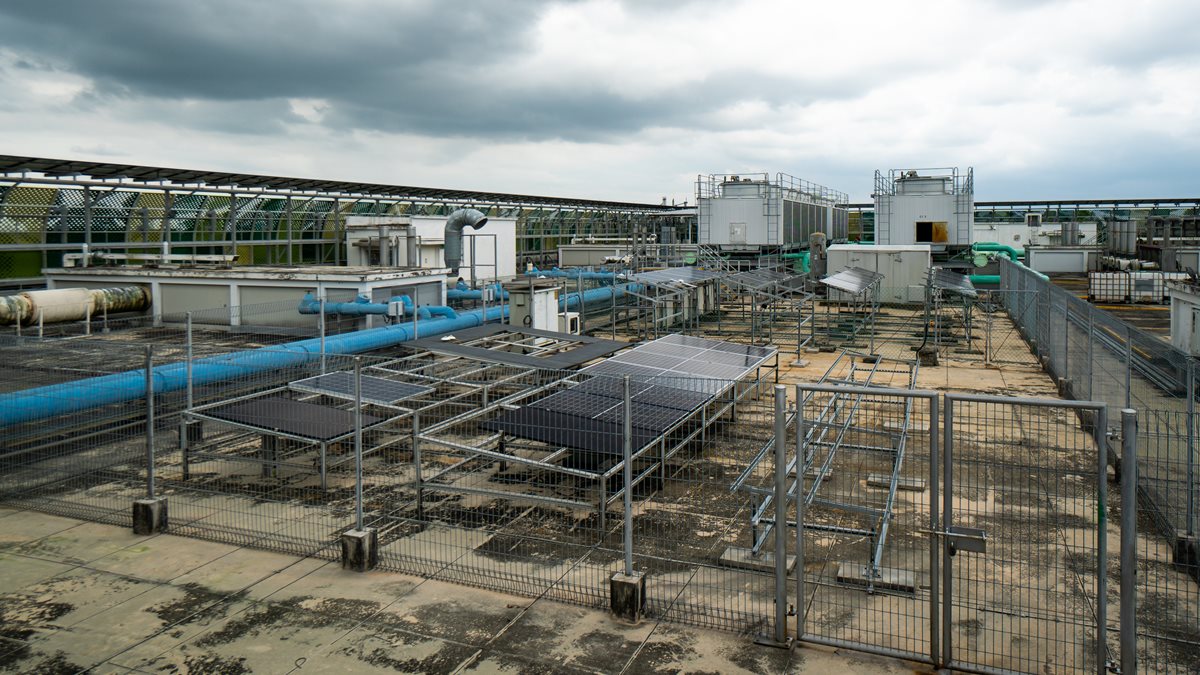
Solar PVs line the eco-business park's roof testing the possibilities for a future powered by clean energy
One of the main factors has been the lack of a suitable energy storage solution. Most solar energy is generated in the day but demand peaks at night, when households use electricity for air-conditioned sleep, lights and more.
The solution is a little like building a dam to create a reservoir, just like the Marina Barrage built across the Marina Channel. Besides keeping seawater out, it also captures and stores clean water flowing into Marina Bay, which could be used as and when the demand arises.
If you think of solar energy as water, the solar photovoltaics (PV), or solar panels, that increasingly line the roofs of buildings and HDBs in Singapore are like Marina Barrage in that it is holding onto solar energy and ensuring nothing is leaking away unnecessarily.
Batteries then are like the reservoir in our story. They store the solar energy that isn’t used right away so that nothing goes to waste.
Power Options
Most of the batteries we use in our daily lives are lithium ion batteries, which are not a great fit for wide scale energy storage and the goal we’re working towards in 2030.
For one, they have a relatively short lifespan. If you’ve used your laptop or mobile phones for more than a few years, you’ll be familiar with how quickly batteries get drained as they get older; and how often you’d have to recharge them. Changing batteries on a large scale every three to eight years isn’t efficient.
Also, lithium ion batteries tend to get overheated. For instance, your handphone may get warmer than it usually is after a long phone call. Taking a break from using the device allows it to stop using as much power and cool down.
If we are looking to use batteries on a larger scale, we can’t simply stop using power collectively. As a result, the lithium ion batteries would need to be accompanied by cooling agents – which then adds to cost, among other constraints.
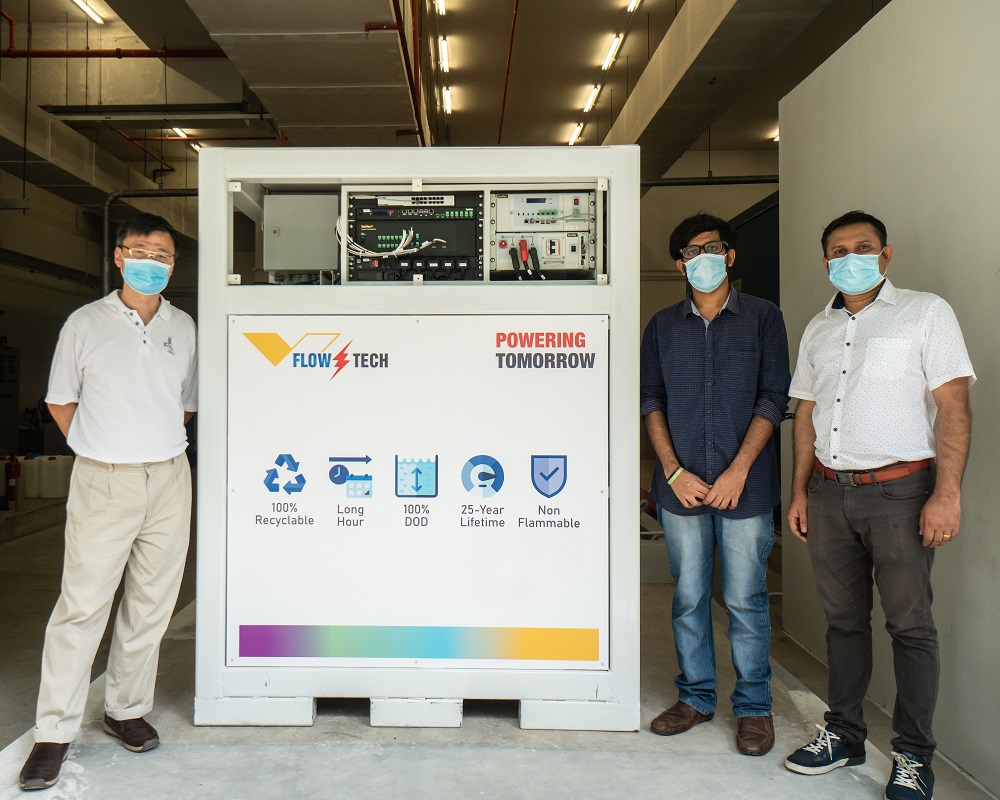
Members of the V-Flow Tech team with their Power Cube – a scalable and adaptable battery and energy storage solution
As such, vanadium flow batteries represent a more suitable alternative to energy storage as they usually last at least two decades. Vanadium itself is a readily available metal that has historically been used to reinforce steel.
To address issues of overheating, a particular flow battery stands out: the V-Flow Tech Power Cube, invented by Singapore-based company V-Flow Tech. Developed with the support of Temasek Foundation, the Power Cube is a vanadium flow battery that can last up to 25 years, which is more than three times longer than conventional lithium ion-based solutions!
Additionally, it also comes with a proprietary organic additive that allows energy to be stored at temperatures as high as 55 degrees Celsius, without chemical cooling agents. Compared to a maximum of 40 degrees Celsius for solutions based on similar vanadium flow technology, it is able to withstand overheating better and provide a continuous stable and reliable power throughout.
Right Technology, Right Application
From June to October 2020, the Power Cube was successfully test-bedded, powering lighting in common areas and car parks at eco-business park, CleanTech One. If needed, the Power Cube could easily be scaled up by expanding the battery to allow it to accommodate more vanadium solution, which then stores additional energy.
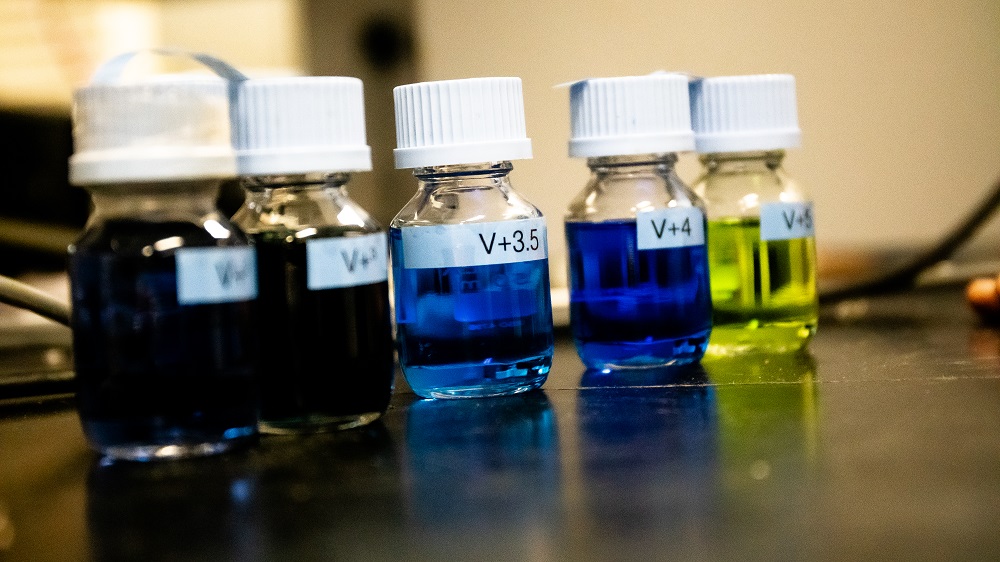
Historically used in steel, the metal Vanadium sits here in its aqueous states ready to be deployed to store renewable energy such as solar
“There are many kinds of energy storage technology available,” explained Dr. Avishek Kumar, who co-founded V-Flow Tech, the organisation behind the Power Cube. “The thing then is to find the right technology, for the right application to get the right economics.”
Given the Power Cube's ability to be built and expanded with relative ease, it would be a viable energy storage solution as we use more solar energy.
Clean Futures
In addition to supporting energy storage on a national scale, the adaptable Power Cube can be used to fuel clean energy on a smaller scale for site-specific grids. This offers individuals, corporations and public structures access to clean energy should they wish to reduce their impact on climate change.
For individuals, site-specific grids include electrical vehicle charging stations, as illustrated below.
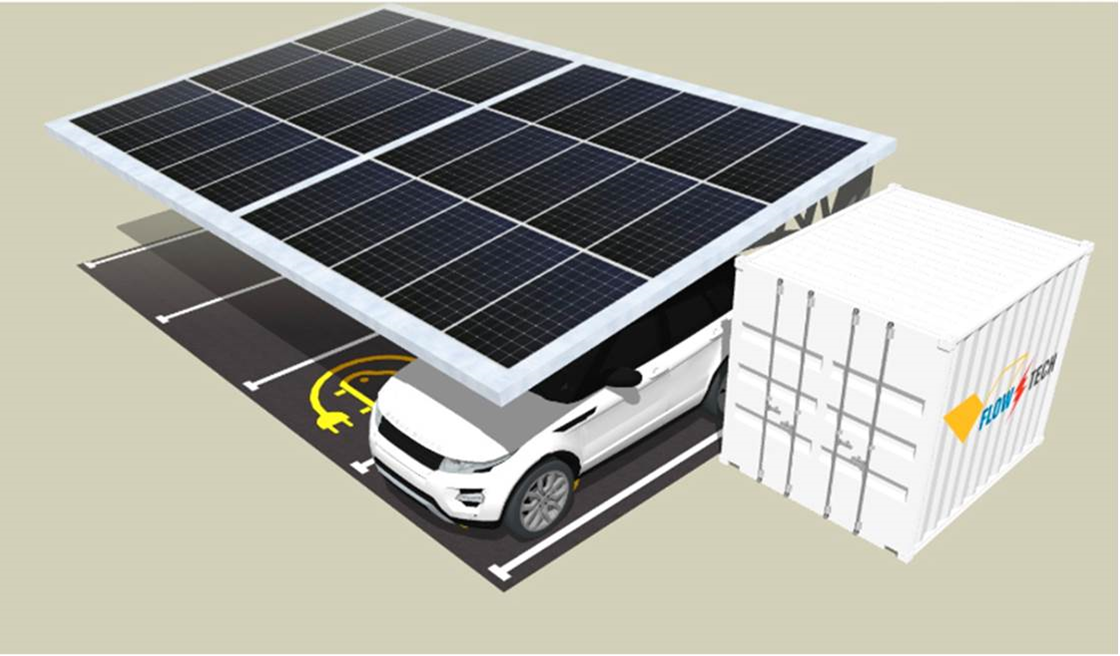
Photo: V-Flow Tech
Shelters or roofs at car parks may be lined with solar PVs to capture solar energy from the sun during the day. The energy is then stored in the white Power Cube. At the end of the day, electric vehicles can plug in to recharge using clean solar energy, even under the cover of night fall.
These site-specific grids can also be used for public areas, like to power sheltered walkways or future multipurpose bus stops, as pictured below.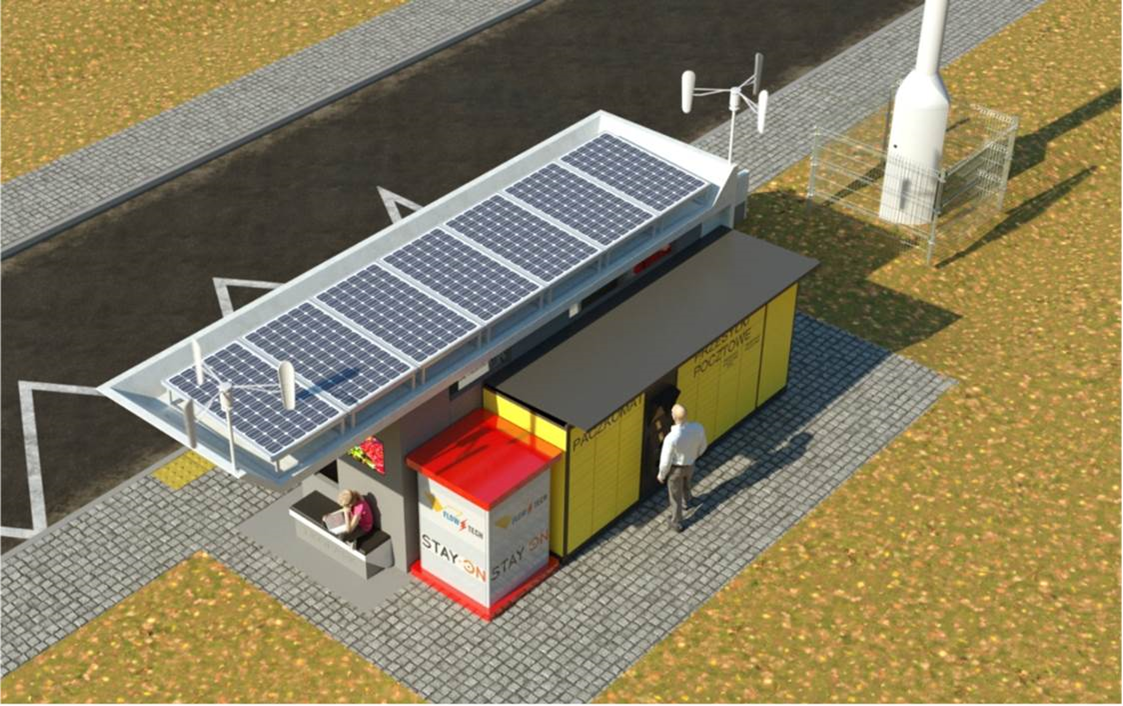
Photo: V-Flow Tech
For corporations, the Power Cube can be used to create smaller power grids that use clean energy to support their operations. With industrial and commercial operations being the biggest users of electricity in Singapore, taking steps to adopt cleaner energy sources for a fraction of their operations brings the country a step closer to realising a green future.
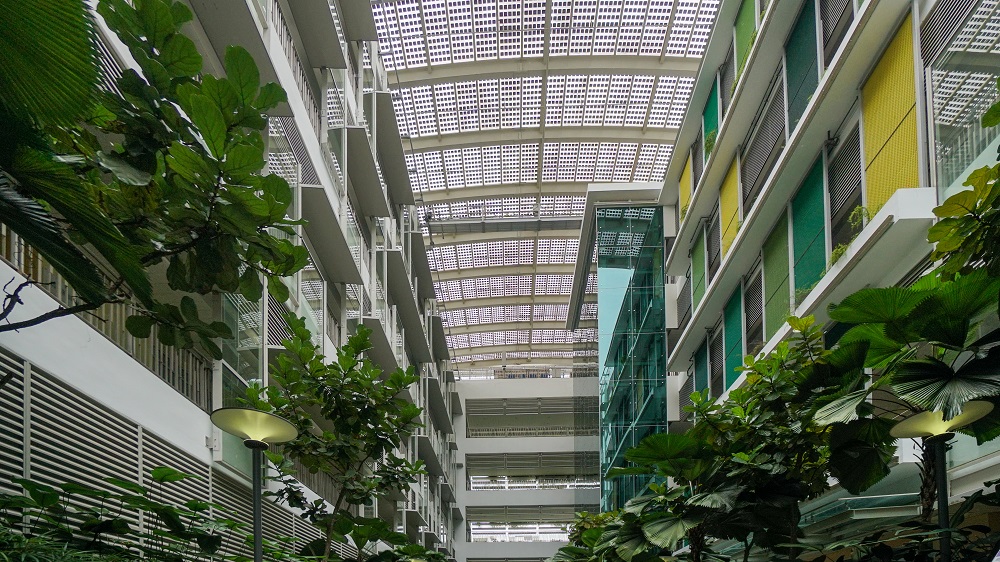
Solar PVs stretch across CleanTech One's roof like tiles. Here, the V-Flow Tech team successfully used their Power Cube to provide clean electricity for parts of the building.
The Power Cube’s potential to scale and its adaptability for various uses makes it a key viable energy storage solution as we work to increase using clean energy, such as solar and minimise wasting energy. With its help, and other green technologies, we can build a sustainable Singapore for all.